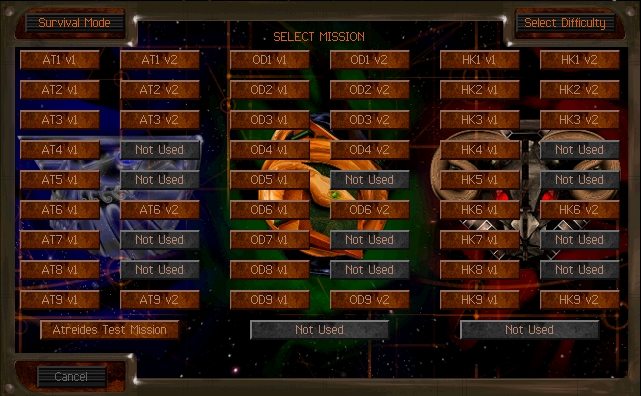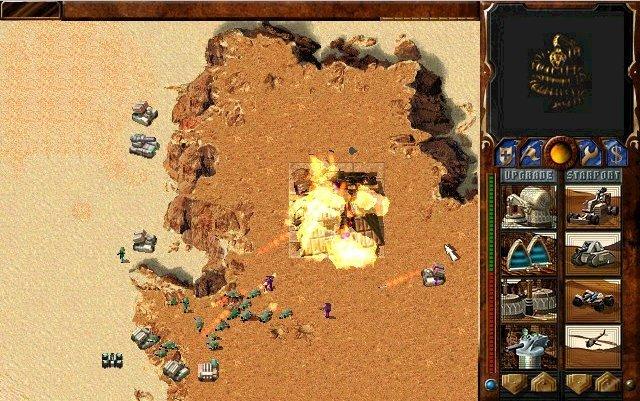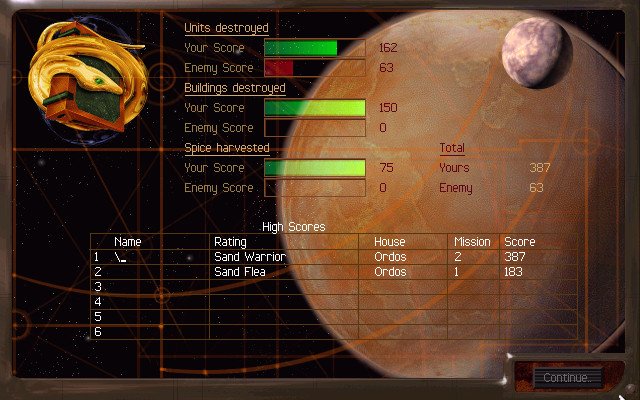


Another damaging factor when weighing the pros and cons of sheer beauty is that the camera here cannot be focused directly on an individual unit. Units seem a little jagged in comparison to their cousins in those rival titles, and animation is also a touch stiffer. Visual quality still isn't up to that on display in the likes of Dark Reign 2 and Ground Control. It may be a little behind the times in this regard - particularly considering that just about every other RTS developer hopped aboard the 3D bandwagon last summer (Activision with Dark Reign 2, Sierra with Ground Control, SSI with Earth 2150, etc.) - though the implementation here is quite good.

As noted above, this is the first Westwood game to feature a gameplay engine that works in all three dimensions. Other visual aspects of the design take Emperor into the present, however. Most of the time, however, you'll just sit back and gawk at how much better Michael Dorn looks without that rubber turtle on his head. The video sequences are so unlike the actual game that you have to make a conscious effort and remind yourself that the two are supposed to be related. This isn't any more effective here than it is in the Red Alert games. Everything is rendered even more ludicrous by the way that the actors address the gamer directly, breaking the fourth wall during mission briefings to inform the player that, yes, all is riding on what he or she is about to do. Almost every scene has a few unintentionally hilarious moments, due to hammy acting, poor scripting, or a combination of the two. Some are recognizable stars, such as the aforementioned Michael Dorn of Star Trek fame, while others are nobodies, but they all share the same uncanny ability to chew the scenery.
#DUNE 2000 64 BIT WINDOWS 10 PROFESSIONAL#
Like Red Alert, the plot is detailed in lengthy, gaudy film clips featuring a number of professional actors. The game comes dressed up in all the expected full-motion video accoutrements that Westwood has been using since it was still acceptable to do so, in the middle 1990s. Swap the cornball commies and Kari "Sliders" Wuhrer's patented breasts for Sandworms and Michael "Worf" Dorn's patented glower and you'd be hard pressed to find any significant differences between the last two Westwood efforts.Įmperor certainly looks the part. Emperor adds a true 3D engine to the mix for the first time, but aside from that and a few other noteworthy and not-so-noteworthy tweaks, this is the same game as Dune 2, Command & Conquer, Red Alert, Tiberian Sun, Dune 2000, and last autumn's Red Alert 2. All of the basic concepts that fueled both that classic and the subsequent Command & Conquer series have been recycled again and again. Their latest looks all the way back to 1992's Dune 2 (often cited as the first RTS ever developed) for its inspiration. While the rest of the gaming world has moved on to bigger and better things, this formerly innovative company has simply been repeating the real-time strategy past. And someone should tell the good people at Westwood.

We thought they'd never end.īut they have. Or at least as old as the dust blanketing that closet-consigned P75 you once used to play Command & Conquer. For while the title in question is just hitting stores today, the gameplay concepts are as old as dirt. Although it's odd to start a review with a history lesson, such an approach is entirely appropriate when you're dealing with a new game as archaic as Emperor: Battle for Dune.


 0 kommentar(er)
0 kommentar(er)
